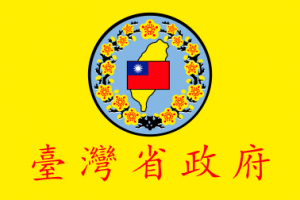Language/Min-nan-chinese/Vocabulary/Clothes
Hi Min Nan Chinese learners! 😊
In this lesson, we will learn useful vocabulary related to clothes. Understanding these words will take you one step closer to fluency in the language!
With the completion of this lesson, consider investigating these related pages: Say Hello and Greetings in Min Nan Chinese, Family, Health & Days of the Week.
Essential Vocabulary[edit | edit source]
First, let's discover the basic vocabulary related to clothes:
| Min Nan Chinese | Pronunciation | English |
|---|---|---|
| 衣服 | i-hok | Clothes |
| 裙子 | kuân-tsí | Skirt |
| 上衣 | sió-ê | Shirt/top |
| 褲子 | khò͘-tsí | Pants |
| 外套 | gōa-thoat | Jacket/Coat |
| 短褲 | toán-khò͘ | Shorts |
As you can see, the terms for various types of clothing are quite easy to learn.
Now, let's put these words into context:
- Person 1: 你穿啥衣服?(Lí chhuann-siap i-hok?) (What clothes are you wearing?)
- Person 2: 我穿裙子。(Guá chhuann kuân-tsí.) (I'm wearing a skirt.)
Accessories and Shoes[edit | edit source]
Apart from clothes, you'll also need to learn the vocabulary for accessories and shoes.
| Min Nan Chinese | Pronunciation | English |
|---|---|---|
| 袜子 | guá-tsí | Socks |
| 鞋子 | he-chí | Shoes |
| 帽子 | bō͘-tsí | Hat |
| 手表 | siáu-piáu | Watch |
| 眼鏡 | kiám-kéng | Glasses |
| 手套 | siáu-thô | Gloves |
Here are a few examples to help you understand these words in context:
- Person 1: 你喜歡戴什麼帽子?(Lí hóan-huann tài siánn-mih bō͘-tsí?) (What hat do you like to wear?)
- Person 2: 我喜歡戴漁夫帽。(Guá hóan-huann tài gî sú bō͘-tsí.) (I like wearing a fisherman's hat.)
- Person 1: 你要買什麼鞋子?(Lí iàu bé saⁿ-mih he-chí?) (What shoes do you want to buy?)
- Person 2: 我想買一雙高跟鞋。(Guá siūⁿ bé tsi̍t sóng ko gîng he-chí.) (I want to buy a pair of high heels.)
Cultural tips[edit | edit source]
Now that you know some new vocabulary related to clothes and accessories, let's dive into some cultural tips!
In traditional Min Nan Chinese culture, people are very mindful of the significance of specific clothing.
For example, the qipao or cheongsam, a form-fitting one-piece dress, is strongly associated with Chinese culture. It is usually made of silk or cotton and features a high collar and split skirt. The qipao was first worn in the 1920s and 1930s as modest everyday wear for women, but since then, it has been well received globally for its elegant and timeless beauty.
Another traditional item is the Chinese hat, which is often associated with the martial arts. In the past, the hat was worn by scholars, officials, and ordinary people alike, and was often symbolic of one's social status.
Learning about traditional clothing and accessories can be a fascinating way to understand a culture better and appreciate the intricacies of fashion and design!
Now, let's practice our new Min Nan Chinese vocabulary with a dialogue:
- Person 1: 你今日穿啥衫?(Lí kin-jȧ chhuann siap siám?) (What are you wearing today?)
- Person 2: 我穿著一件脫掉袖的上衣同一條褲子。 (Guá chhuann-tio̍h chi̍t kiàn thuat-tiàu yáu ê sió-ê tông chi̍t tiáo khò͘-tsí.) (I'm wearing a top with the sleeves rolled up and pants.)
- Person 1: 你有著啥鞋子?(Lí ū tio̍h siap he-chí?) (What shoes are you wearing?)
- Person 2: 我穿著夾腳拖。(Guá chhuann-tio̍h kap-khiau-thô.) (I'm wearing flip-flops.)
Conclusion[edit | edit source]
Congratulations, you've made it to the end of this lesson! Now that you've learned these new words and phrases, you'll be able to confidently talk about clothes and accessories in Min Nan Chinese. Don't forget to practice your new vocabulary by finding native speakers on the Polyglot Club website. Check out more Min Nan Chinese vocabulary here if you're hungry for more! 😊
➡ If you have any questions, please ask them in the comments section below.
➡ Feel free to edit this wiki page if you think it can be improved. 😎
Upon wrapping up this lesson, take a look at these related pages: Fruits, Basic phrases, Count to 10 & How to say Good Bye?.

